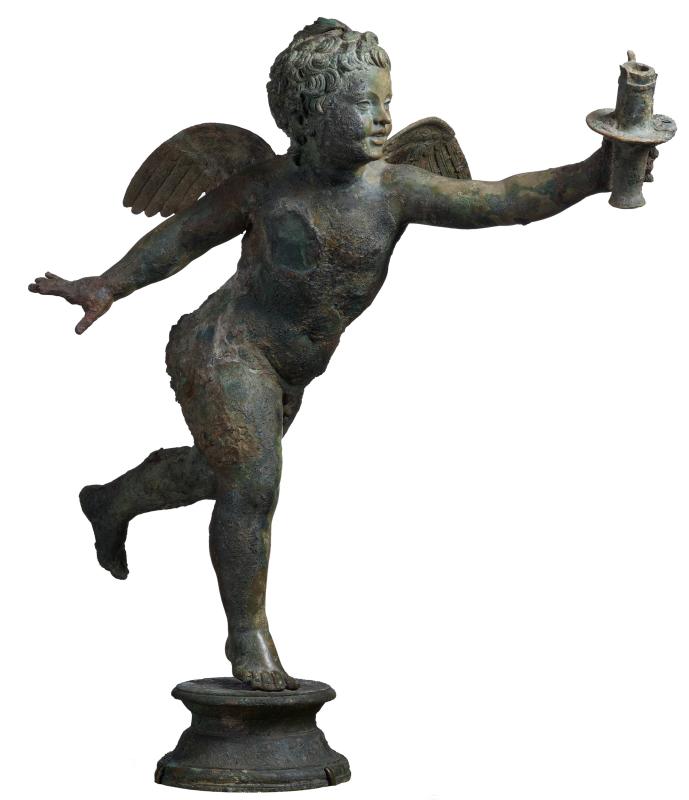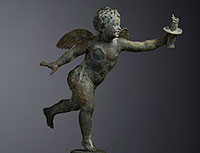
Unknown, Hellenistic
2nd or 1st century B.C.
Running Eros, Holding a Torch
Hellenistic Greece, 2nd or 1st century B.C.
bronze
23 3/16 inches (589 mm), with pedestal; figure: 20 1/4 inches (514 mm)
AZ010
Provenance
Excavated by Vincenzo de Prisco (1861-1921) from the Villa Pisanella, Boscoreale, ca. 1894-99; sold by Prisco to Ercole Canessa (1868-1929), who transported part of the hoard to Paris; purchased from E & C Canessa in Paris on 2 July 1902 by Pierpont Morgan (1837-1913), New York; bequeathed to the Library by J.P. Morgan, Jr. (1867-1943), New York.
Catalog link

